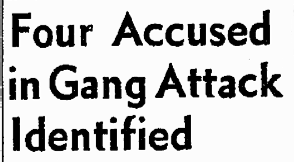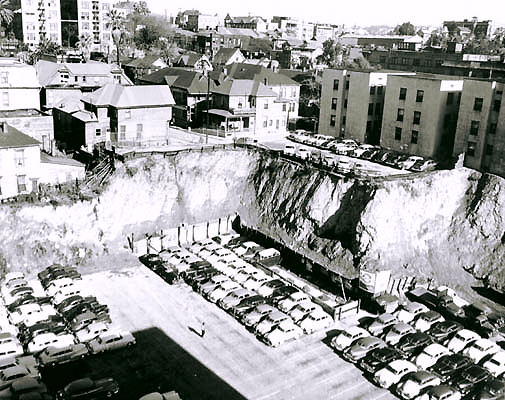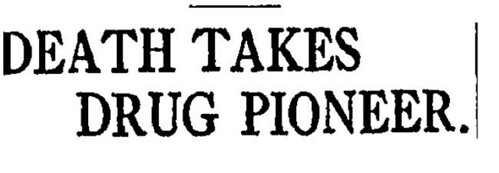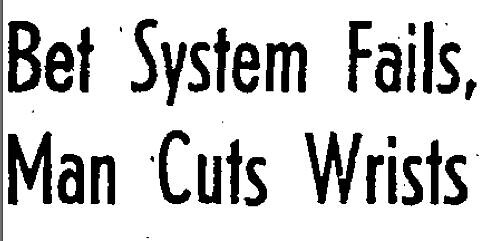
Dodge City. Tombstone. The OK Corral. Wyatt Earp will also be remembered as a guy who ran a piece of two-bit flimflam on Bunco Hill. And got popped for it–but then, this was no 1880s gambling saloon. This was the grandest new hotel in Taft-era Los Angeles. Perhaps Earp was a little out of his element.
After the turn of the century, Earp was based out of Los Angeles, trying his hand at the kind of gambling grown-ups do–oil exploration, mining ventures, real estate–with considerable less success than he‘d had at the card table. Occasionally he‘d work with LAPD on outside-jurisdiction work, like chasing fugitives into Mexico, but inveterate gambler Earp‘s core motivation remained gambling. This would on occasion put lawman Earp on the wrong side of the straight and narrow–e.g., his refereeing of the Fitzsimmons-Sharkey boxing match of ‘96, generally regarded to be fixed. And when Earp and his con-rades would set up their fleece outfit, where else would they go but that anchor of Bunker Hill, the brand-new Auditorium Hotel?


The Auditorium had been open a scant six months when on July 21, 1911, a J. Y. Peterson sat down for game of faro with three sharpers from San Francisco–W. W. Stap, Waller Scott, and E. Dunn. But all would not go as planned.
Seems that Peterson–a real estate agent with an office at 407 Stimson Building–got hinkey at the trio‘s far-out tale that they were sore at their SF syndicate, and wanted to stiff their own backers by rigging the game to let Peterson win big. Peterson would thus play the rigged game–pinpricked odd cards, the dealer placing a finger on the table when an even card was to show–in front of others, and make a hefty profit on the $2,500 ($54,985 USD2007) he‘d invest at the outset in chips. Realizing he had nothing to lose except his roll, he called in the coppers.
Stap, Scott, and card-dealer Dunn engaged club rooms 425-426 at the Auditorium, installed their faro bank outfit and all kindred paraphernalia, and were ready to get down to the business of swindling Peterson–who was further tipped off to that fishy smell in Denmark as there were no other players present–when Johnny Law busted in.
Down at the station-house, the W. W. Stap who inveigled Peterson into buy into a fixed bank game turned out to be none other than Wyatt Earp. Released from City Jail on $500 bond, Earp‘s explanation was that it was purely accidental that he should be there during the raid. The police, in their infinite wisdom, elected to bust into the room before any gambling actually begun, which sank the conspiracy to defraud charge; the courts couldn‘t make a vagrancy charge stick, either.
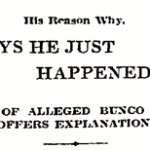 In the end, the City Prosecutor decided there wasn‘t enough evidence against Earp. Waller Scott pleaded guilty and demanded a jury trial, but the City Prosecutor “didn‘t have the time” to take it up and let the whole thing drop. Dunn, aka Harry Dean, pleaded guilty and was given a six month sentence, suspended, on condition that he leave the city. And so Wyatt Earp went on his six-shooterin‘ way: he hung around Hollywood and hit up William S. Hart to publicize his life. That never happened, ended up dying down on 17th Street, and was buried in a Jewish cemetery in 1929.
In the end, the City Prosecutor decided there wasn‘t enough evidence against Earp. Waller Scott pleaded guilty and demanded a jury trial, but the City Prosecutor “didn‘t have the time” to take it up and let the whole thing drop. Dunn, aka Harry Dean, pleaded guilty and was given a six month sentence, suspended, on condition that he leave the city. And so Wyatt Earp went on his six-shooterin‘ way: he hung around Hollywood and hit up William S. Hart to publicize his life. That never happened, ended up dying down on 17th Street, and was buried in a Jewish cemetery in 1929.
Finest New Hotel in Modern Christendom
“It will command a view of perennial green, unsurpassed in the heart of any great city!”
What was this this hotbed of vice, the Auditorium Hotel? Only the finest new hotel in Christendom, mister. (“It will command a view of perennial green, unsurpassed in the heart of any great city!”)

It all began with the northwest corner of Fifth and Olive, facing Central Park. (I know, the purist in you wants to object that we‘re not technically on Bunker Hill. Well, think of the Auditorium Hotel as our landmark edge to the south. The Jaffa Gate, if you will. Angels Flight is the Dung Gate and we‘ll call the Monarch Hotel Damascus Gate while we‘re at it. Naturally you‘re continuing to argue that the Edison Building makes a better Jaffa Gate than the Auditorium Hotel. Well, you would say that.)

Auditorium architect Otto Neher, with partner Chauncey Fitch Skilling, produced the New Auditorium Hotel, designed in what the papers for lack of a better term called the “Modern Classic” style. It was 60×162‘, faced with light-colored granite, the lobbies lavished in marble, mahogany and mosaic tile. The six floors of 150 rooms are paneled in birch.

A look up Olive–the three biggest buildings behind the Auditorium are the Trenton, the Fremont, and the Palace Hotel:

The Auditorium is leased by Bernard Frank Green and his mother, Mrs. Mary Sells Green; in 1919 M. Drake Perry takes over the lease and buys the hotel from R. D. Wade in 1921. He puts in a grill room and makes another $100,000 in improvements. But the shock of the Biltmore Hotel being built on the opposite corner apparently killed Perry, and Probate Court sold the Auditorium Hotel to George Roos.
(The Biltmore to the left; the 1924 Pacific Telephone and Telegraph Company Mutual Exchange is under construction. The Deaconess/Clara Barton Hospital between the Methodist church and the new telephone building doesn’t have many days left before conversion to an auto park.)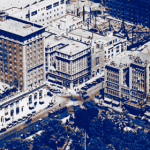
Roos (vintage clothing collectors out there certainly know the Roos Bros. label–George was one of those Rooses) eventually sells to Charles Harris, who held the lease and ran the hotel through the 20s.
It‘s an exciting time: everyone‘s abuzz about the sale of the California Club at Fifth and Hill to the Title Guarantee and Trust Company, and the forthcoming home of California Edison at Fifth and Grand. Harris refurnishes 100 rooms and renames the Auditorium the San Carlos in January 1929. Why? Because at that point he was spending most of his time in Phoenix, directing the opening of his mighty San Carlos there. Just as there were once matching Auditoria, there were now Sister San Carloses. Charles Harris in 1931 departs the Phoenix San Carlos for yet his third San Carlos, this one in Yuma. He eventually sells his Los Angeles SC in toto to G. G. Joyce, owner of the Hazlewood restaurant chain in Portland.
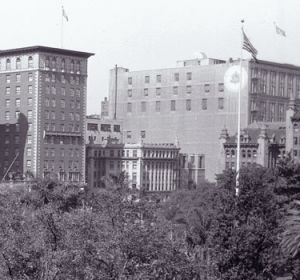
Here, in this mid-30s image, check out the San Carlos neon blade affixed to the wedding cake that is the former Auditorium:

The San Carlos then went through a streamlining much in the way the Auditorium did:
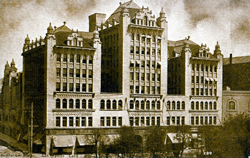
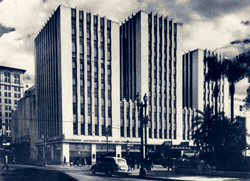
Now we all know that the redoubtable Claud Beelman was the architect-at-helm for the 1938 Philharmonic Auditorium redesign. This author is yet to discover when (and by whom) the San Carlos had its cleanlining:

The San Carlos made its way into the Modern Age, even acquiring a 1955 Armet and Davis Googies:

”¦so what became of our Jaffa Gate? Unlike most of Bunker Hill, it made it all the way through the mid-1980s. Here, you could hang at Googies and get a room at the Carlos to boot, ca. 1986; that‘s the Biltmore Tower going up in the background:

(But first, a map, so as to explicate the many addresses of the Auditorium/San Carlos.)

 William Friedland was a cigar store clerk at one of the San Carlos‘s sidewalk shops. At least he was until February of 1939, when he got popped for making book therein. The establishment at 513 West Fifth had been raided many times for horserace betting, and in November 1940 Friedland had to go before the LA County Grand Jury to dish the dirt on a crooked horserace racket. He was grilled by none other than Jerry Gielsler, chairman of the Horse Racing Board, who disclosed the racing scandal. Swirled into the mix of our tobaccoshop/bookstore at the San Carlos were bribe-taking jockeys and horse owners, as well as local sharpies Benny Chapman, I. W. Kivel, aka Doc Kebo; Bernard Einstoss, alias Barney Mooney; and Saul “Sonny” Greenberg. Mooney and Kebo gave horse owner Irving Sangbusch (alias James J. Murphy) over $20,000 to bribe jockeys at Hollywood Park in 1939; by the end of 1940 the take was up to $180,000 on a single race.
William Friedland was a cigar store clerk at one of the San Carlos‘s sidewalk shops. At least he was until February of 1939, when he got popped for making book therein. The establishment at 513 West Fifth had been raided many times for horserace betting, and in November 1940 Friedland had to go before the LA County Grand Jury to dish the dirt on a crooked horserace racket. He was grilled by none other than Jerry Gielsler, chairman of the Horse Racing Board, who disclosed the racing scandal. Swirled into the mix of our tobaccoshop/bookstore at the San Carlos were bribe-taking jockeys and horse owners, as well as local sharpies Benny Chapman, I. W. Kivel, aka Doc Kebo; Bernard Einstoss, alias Barney Mooney; and Saul “Sonny” Greenberg. Mooney and Kebo gave horse owner Irving Sangbusch (alias James J. Murphy) over $20,000 to bribe jockeys at Hollywood Park in 1939; by the end of 1940 the take was up to $180,000 on a single race.

 The jury heard testimony from a Clay Selby, manager of the Biltmore Garage, adjacent to the San Carlos. He asserted that the clicking of chips and rattle of dice could be heard from 511 West Fifth as early as 1925 (he remembered the date because that was about the time habitué-of-the-place Eddie Eagen was shot there in a holdup). Selby said that when 513 was in operation, he could hear loud-speakers announcing race results in the garage. When asked if it was loud enough for a policeman on the street to hear it: “Oh,” said Selby, “they all knew about it.”
The jury heard testimony from a Clay Selby, manager of the Biltmore Garage, adjacent to the San Carlos. He asserted that the clicking of chips and rattle of dice could be heard from 511 West Fifth as early as 1925 (he remembered the date because that was about the time habitué-of-the-place Eddie Eagen was shot there in a holdup). Selby said that when 513 was in operation, he could hear loud-speakers announcing race results in the garage. When asked if it was loud enough for a policeman on the street to hear it: “Oh,” said Selby, “they all knew about it.”

Things got even saucier when the horse trainer for Don Ameche and Chester “Lum” Lauck testified that he was approached by Bernard Mooney, and that Mooney wanted to fix Ameche‘s horses to lose races. Apparently Mooney enlisted his pal George Raft to have a friendly discussion with Ameche about the subject.
Of five defendants, only Bernard Mooney got nicked–for contributing the delinquency of minors. Minor jockeys, which legally should cancel itself out. Some $1,000 fines were assessed, but then, that‘s what these fellows spent on shoes in a month. Sure, the Black Socks made finageling baseball illegal, but what was so wrong with a little racetrack gratuity? Giesler went all nuts afterward and called for laws protecting boxing, football, wrestling…wrestling has, for example, been unhindered by money and scripting ever since. (One may read more about the scandal here.)
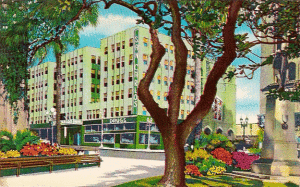
Let‘s stay on the subject of crime.
The Auditorium wasn‘t open six months before the help developed sticky fingers; in July 1911 bellboy Raymond Perry was nabbed in his hotel down on Grand between 5th and 6th, secreting stolen diamonds in his socks.

In 1919 Harry Royse decided to give up the life of a minister. The life of a Methodist clergyman–which he‘d led for ten years–lost its kick apparently, so he spent most of that ‘19 checking into hotels and burglarizing the stores therein, and sending ill-gotten gains to his new lady-friend up in San Francisco.

Royse was finally nabbed in the act with his fifteen-year-old nephew in tow, pilfering typewriters from the Auditorium‘s shop on the corner of Fifth and Olive. He was given one to fourteen at Q; the nephew went to juvenile hall, and the gal up north got no more pretty things.

The early morning of Dec 21, 1924 saw a the arrival of the “variety bandits.” Two men hit the Moon Drug Store at 3526 West Washington, forcing the soda clerk into the closet and making off with $200; they hit the Barnett Drug Store at 3723 South Vermont, where they locked up two women and emptied the register of $75 (during which time a customer entered; one of the bandits took off his cap and waited on the gent, selling him a magazine and pocketing the proceeds); they hit the Zenith Drug Store at 4929 Moneta, and made off with $60; and when they then hit Harry Spooner‘s drug store at 4493 Beverly Blvd, they got $30 and eight pints of whiskey. Maybe it was the whiskey. Maybe it was getting late. Maybe it was just time for their luck to change. Because things didn‘t go so well at the Auditorium Hotel.
Just before dawn, these two heavily armed gents muscled night clerk J. C. Evans into the back to open the safe. Though threatened with instant death, Evans claimed he didn‘t have the combination. As the two holdup men argued, Evans slipped away, and the bandits took right after him. Unfortunately for them, Evans had a good knowledge of the many doorways and halls of the lower floor, and got a good lead on them, long enough to turn, produce his own hand cannon, and open fire. The robbers, one of them apparently hit, had to make it out of the hotel in a mad dash and into their touring car and speed away into the first morning light, never to be heard from again.

August 14, 1927 was a red-letter day for crime in Los Angeles: armed men stole $2,000 in cash and jewelry, and a $1,500 car, from a auto dealership at 1355 South Main; two men were beaten and robbed by a gang of thugs at West Tenth St. near Georgia; two men in an automobile drove up alongside–a reverend, no less–Rev. Joseph Curran at Eightieth and Moneta, and robbed him without even getting out of their car.

Lastly, later that night, three gunmen showed up at the auto rental concern in the Auditorium Hotel to relieve manager D. C. Huff of $85 ($1,007 USD2007).
Reprobate gaming came back into fashion at the San Carlos in 1948”¦in the form of pinball. In March of 1948 nine men were arrested by the administrative vice squad for owning these marble contraptions, in flagrant violation of the City‘s antipinball ordinance. Asst. City Atty. Donald Redwine, however, doubts the arrests should have been made until someone comes up with a “clear-cut decision” on the legality of these newfangled games. Of course, pinball isn‘t exactly new, but if there‘s one thing 1947 gave us it‘s a pinball machine that (distributors claim) is a “game of science and skill.” That notwithstanding, one LaVerne Murphy is cooling his heels in the tank after vice squad raiders came down on his newfangled “flippered” machine in the San Carlos. (Even if they are just games of “science and skill,” you still can‘t own one without a permit.)


Let‘s move on from crime to death and despair!
 In June of 1914, Mrs. H. G. Purcell, 50, a woman of wealth and taste, had come from Chicago to buy a lot and build a home in sunny Los Angeles. For two years she lived in the Auditorium Hotel, well-liked and highly sought after for social and cultural gatherings. And yet, her father having died of cancer, she believed, rightly or wrongly, that it was going to get her too, and drank a phial of carbolic acid in her room.
In June of 1914, Mrs. H. G. Purcell, 50, a woman of wealth and taste, had come from Chicago to buy a lot and build a home in sunny Los Angeles. For two years she lived in the Auditorium Hotel, well-liked and highly sought after for social and cultural gatherings. And yet, her father having died of cancer, she believed, rightly or wrongly, that it was going to get her too, and drank a phial of carbolic acid in her room.
February 1940, insurance man Jesse Edward Patty, 47, left his home at 1227 S. Plymouth Blvd. and checked into the San Carlos with murderous intent. Self-murderous. Several letters to his wife and friends later, he took poison. 
L. D. Roberts, a 50-year-old lumber man, left his home at 7024 Mission Place in Huntington Park, July 1942, to check into the San Carlos. Roberts had problems, but brought with him a traditional problem-solver, the .32 automatic.
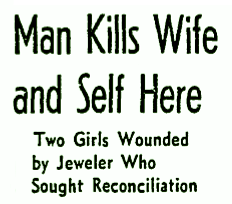 Joe Guiterrez, 45, lived at the San Carlos. He‘d been separated from his wife Rafaela Uriarte Guiterrez, 46, for two years. It was Sept. 3, 1941, and Joe had had enough of the San Carlos. He wanted to come home to their house at 1314 Sunset Blvd. He wanted a reconciliation. Always bring a gun to a reconciliation.
Joe Guiterrez, 45, lived at the San Carlos. He‘d been separated from his wife Rafaela Uriarte Guiterrez, 46, for two years. It was Sept. 3, 1941, and Joe had had enough of the San Carlos. He wanted to come home to their house at 1314 Sunset Blvd. He wanted a reconciliation. Always bring a gun to a reconciliation.
Rafaela‘s kids from a previous marriage were home–Rosie, 24, Lydia, 20, Mario, 16, and Carmen Uriarte, 14. Mom and “dad” hadn‘t been talking long when they heard the shot. Joe came out firing, the girls fled, Carmen took one through the knee and Lydia through the shoulder before Joe was tackled by Mario. Gutierrez shoved the gun into Mario‘s side and pulled the trigger, but the gun was empty. Mario kicked dad out the back door. Gutierrez reloaded his .25, and gave himself the same treatment he gave mom: one to the head.
And lest we forget “Miss Dale Erwin, 22, of Trenton, NJ” who checked into the San Carlos in August of 1946 and promptly leapt–or fell–from her window. As she landed in a second-floor courtyard, and there were plenty of taller hotels around, let‘s give her the benefit of the doubt.
 Let‘s go back in time a bit and take a look at some of the folks who make the Auditorium so special.
Let‘s go back in time a bit and take a look at some of the folks who make the Auditorium so special.
One is Frederick Jordan, vice-president of the Entomological Society of England. The esteemed zoologist, whose soul is one with butterflies and moths and whose body is dedicated to the netting of terebrant hymenopterae–those that fly, of course–is a welcome additon to the Auditorium. But not as a guest. He‘s the night porter .
.
Seems his English doctor told him to get some sun, and not work too hard. Despite the lateness of the season–October, 1911–Jordan found Los Angeles choked with butterflies, especially the Spring Beauty, the Holly Blue, the Zebra Swallowtail, the Checkered Skipper, the Brown Argus, the Clifden Nonpareil, the Tortoiseshell, the Mother Shipton and the Duke of Burgundy Fritillary. That‘s great Jordan, now get back to work.
 In the vein of any grand hotel (or, say, Grand Hotel), the Auditorium lobby was always full of great excitement, chance meetings, tearful partings, tearful reunions. Such was the case when Dr. D. A. Gildersleeve of Richmond was in town for a 1911 AMA conference to deliver the stirring paper “Hook-worm and What Has Been Done In the South Toward Its Eradication” when he was approached by none other than “Uncle Joe,” who had been residing on East Ninth St. for some years. Joe, it seems, had been a Gilderslave, childhood playmate of the good doctor‘s, had been Gildersleeve‘s servant in battle in all the campaigns of Lee, but had ended up “disenfranchised” after The War. Joe stayed with Gildersleeve for some years but eventually went up North; and now, some thirty-five years later, they were reunited by chance in the Auditorium. An hour of gossip followed between the two in the big chairs; when the doctor bade the older man farewell he was observed slipping him what appeared to be a roll of banknotes. In describing the meeting, the Times writer showed his considerable cultural acuity–or vacuity of cultural sensitivity–in any event, I‘m not going to transcribe it, but will here attach a clip of the encounter between what the Times describes as the “shambling darky” and what I imagine as a Harland Sanders/Maurice Bessinger-looking old ofay:
In the vein of any grand hotel (or, say, Grand Hotel), the Auditorium lobby was always full of great excitement, chance meetings, tearful partings, tearful reunions. Such was the case when Dr. D. A. Gildersleeve of Richmond was in town for a 1911 AMA conference to deliver the stirring paper “Hook-worm and What Has Been Done In the South Toward Its Eradication” when he was approached by none other than “Uncle Joe,” who had been residing on East Ninth St. for some years. Joe, it seems, had been a Gilderslave, childhood playmate of the good doctor‘s, had been Gildersleeve‘s servant in battle in all the campaigns of Lee, but had ended up “disenfranchised” after The War. Joe stayed with Gildersleeve for some years but eventually went up North; and now, some thirty-five years later, they were reunited by chance in the Auditorium. An hour of gossip followed between the two in the big chairs; when the doctor bade the older man farewell he was observed slipping him what appeared to be a roll of banknotes. In describing the meeting, the Times writer showed his considerable cultural acuity–or vacuity of cultural sensitivity–in any event, I‘m not going to transcribe it, but will here attach a clip of the encounter between what the Times describes as the “shambling darky” and what I imagine as a Harland Sanders/Maurice Bessinger-looking old ofay:

Yep, that‘s what it says.
Not all sightings at the Auditorium are happy ones. Leo Julofsky was a messenger for E. D. Levinson & Co., 52 Broadway, New York. He was walking down the street one day–September 19, 1919–with another messenger and $330,000 in Liberty bonds. On their way to Mabon & Co., 45 Wall St., Julofsky handed his satchel over to the other messenger to go in and wash his hands at 71 Broadway. The other messenger waited”¦and waited”¦and opened the satchel. It was empty. Julofsky, and $141,000 ($1,676,761 USD2007) were gone.
 Julofsky rented an apartement on East 38th, just off Madison Ave. for a month, and then headed west. He met an ex-policeman named John J. Stoney in a Detroit YMCA and they began to travel together. (In answer to a question about girls, he was adamant that no girls were mixed up in the plot whatsoever. Make of that what you will.) Julofsky and Stoney were shacked up together at the Auditorium when Julofsky was nabbed in the lobby on December 27. “I don‘t know why I did it,” said the son of a retired cloak and suit maker, “no girls were mixed up in it and no one is to blame but myself.” He was given three years and change in Sing Sing. He won‘t be alone, though, as his brother Milton and a bond dealer from the Bronx named Arthur Miller were also sent up for criminally receiving his bonds.
Julofsky rented an apartement on East 38th, just off Madison Ave. for a month, and then headed west. He met an ex-policeman named John J. Stoney in a Detroit YMCA and they began to travel together. (In answer to a question about girls, he was adamant that no girls were mixed up in the plot whatsoever. Make of that what you will.) Julofsky and Stoney were shacked up together at the Auditorium when Julofsky was nabbed in the lobby on December 27. “I don‘t know why I did it,” said the son of a retired cloak and suit maker, “no girls were mixed up in it and no one is to blame but myself.” He was given three years and change in Sing Sing. He won‘t be alone, though, as his brother Milton and a bond dealer from the Bronx named Arthur Miller were also sent up for criminally receiving his bonds.
The Lobby of Convergence:

The Auditorium Hotel features itself in a roundabout way as a minor footnote in the famous 1922 Klan raid of Volstead-violating Mexicans in Inglewood, wherein a police shootout ended up in the cops shooting–guess what!–three of their own, one fatally (the town constable), discovered only when the hoods were opened.
 In the depths of the lengthy trial, a stylishly dressed woman began to moan loudly, and when the bailiffs attempted to escort her out, she twisted and fought and screamed “Help! Help! Help! Let me go, I want to see a Kleagle, I want to see a Kleagle!” in tones so loud it brought people out from several floors above and below. She was carried out fighting and taken to the psychopathic ward for observation. Found in her handbag? Her Auditorium Hotel room key. (FYI, the Kleagle there at the time was Nathan A. Baker, then a deputy sheriff for Los Angeles County.)
In the depths of the lengthy trial, a stylishly dressed woman began to moan loudly, and when the bailiffs attempted to escort her out, she twisted and fought and screamed “Help! Help! Help! Let me go, I want to see a Kleagle, I want to see a Kleagle!” in tones so loud it brought people out from several floors above and below. She was carried out fighting and taken to the psychopathic ward for observation. Found in her handbag? Her Auditorium Hotel room key. (FYI, the Kleagle there at the time was Nathan A. Baker, then a deputy sheriff for Los Angeles County.)
And for the last time, that‘s Kleagle, not Fleegle.
 February 7, 1923. P. C. Steckel, a boilermaker, and prominent in organized-labor society, was in court today, telling the judge a tearful story all about how he‘d been awarded the Carnegie medal of honor for rescuing some child from an oncoming train. The judge took this in, told Steckel that Scheherazade had nothing on him, but that it had precious little to do with violating the Miller-Jones narcotic law. Seems Steckel sold four ounces of morphine to a narcotics enforcement officer at the Auditorium Hotel. Nevertheless, Judge Bledsoe said that Steckel was due some consideration for possession of the medal, and gave him only two years at McNeill Island instead of the customary four.
February 7, 1923. P. C. Steckel, a boilermaker, and prominent in organized-labor society, was in court today, telling the judge a tearful story all about how he‘d been awarded the Carnegie medal of honor for rescuing some child from an oncoming train. The judge took this in, told Steckel that Scheherazade had nothing on him, but that it had precious little to do with violating the Miller-Jones narcotic law. Seems Steckel sold four ounces of morphine to a narcotics enforcement officer at the Auditorium Hotel. Nevertheless, Judge Bledsoe said that Steckel was due some consideration for possession of the medal, and gave him only two years at McNeill Island instead of the customary four.
Then there was the matter of Charles Harris, whom you remember as owner-operator of the Auditorium in the 20s and orchestrated its change into the San Carlos, tossing Rev. George Chalmers Richmond out on his ear. Harris entered Richmond‘s chamber on January 3, 1923, removed the pastor‘s clothes and by force of threats kept him from his room. Richmond alleged his good reputation had been damaged and sued for $15,000. We don‘t know what raised Harris‘s ire, though we can speculate: Richmond was a defrocked Episcopal rector, Bolsheviki refusenik and IWW nogoodnik, and mortal enemy of Methodist “Fighting Bob” Shuler. The Auditorium did have Methodists as neighbors, after all. (Why then he elected to rename the place San Carlos, which would vaguely reference some guy named Charles canonized by Papists, is beyond me.)
 The Auditorium was also an exhibition hall, of sorts. It was where you‘d go in 1925 if you wanted to see, on display, Frank Prevost‘s decoding machine. Weighing only half a pound, but with a limitless capacity for sending mechanically coded messages, it represents twelve years of study and effort. See it at the Auditorium before it‘s snapped up forever by the War Department!
The Auditorium was also an exhibition hall, of sorts. It was where you‘d go in 1925 if you wanted to see, on display, Frank Prevost‘s decoding machine. Weighing only half a pound, but with a limitless capacity for sending mechanically coded messages, it represents twelve years of study and effort. See it at the Auditorium before it‘s snapped up forever by the War Department!
Also, go visit Bill Bonelli at his (1932) HQ in the San Carlos, where he‘ll enlist you in his cause against snooperism:

So what became of this wonderland of wonders, you ask?
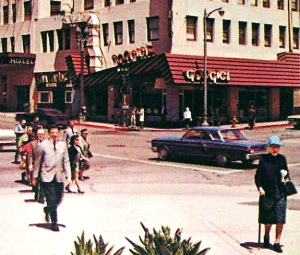
The San Carlos crept her way into the Future, turning her back on the demolition of Bunker Hill behind.
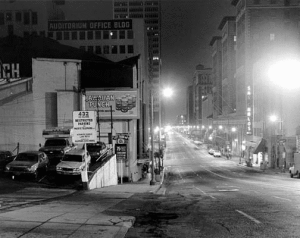
Then, in 1983, David Houck, president of Auditorium Management Co., which purchased the Philharmonic from Temple Baptist, announced demolition to make way for a new office building, hotel and residential condominiums. (Interesting management style, and it remains a parking lot.) Physicians Pharmacy, which opened in the Auditorium Office Bldng. in 1906, moved its vast pharmacy museum–endless Edwardian prescription books, grinders and corkers, bottles full of arcane lotions and potions–across Olive to the San Carlos. That was a bad move: the San Carlos‘s days were numbered.
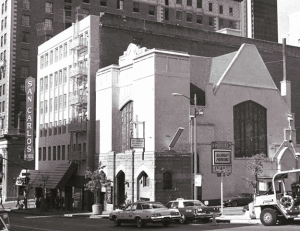
What‘s there to tell? Somewhere around 1987 the corner was cleared. Not a word in the papers to mark its passing. Nobody cried for First German Methodist, either.
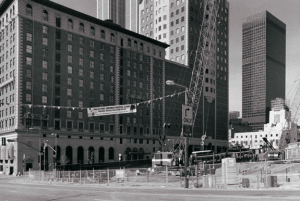
The Southern California Gas Company thought their headquarters would be nifty there.
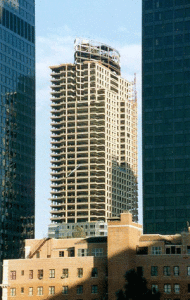
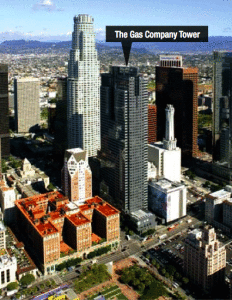
Richard Keating of Skidmore, Owings and Merrill thought it would be cool to design the top to look like a blue flame. Which it sort of does. At least you can eat at their Blue Flame cafeteria.

Why its crown does not light up blue at night is a mystery to all.
In any event, it is finished in 1991.

That then is the tale of the Auditorium/San Carlos Hotel.
Walk in the Gas Co. tower sometime and ask for the Wyatt Earp suite, you’re late for the faro game.
Images courtesy Los Angeles Public Library Photo Collection, USC Digital Archives, and California State Library; postcards, author, except Auditorium lobby, for which I owe my usual debt to Brent C. Dickerson; sleek shots of the Gas Co. Tower from the sleek e-brochure found here; tower under construction photo from the skyscraperpage forum; and the Earp images are just all over the place.
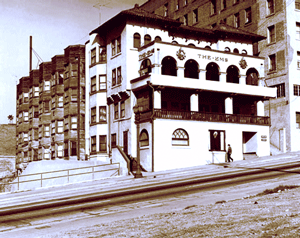

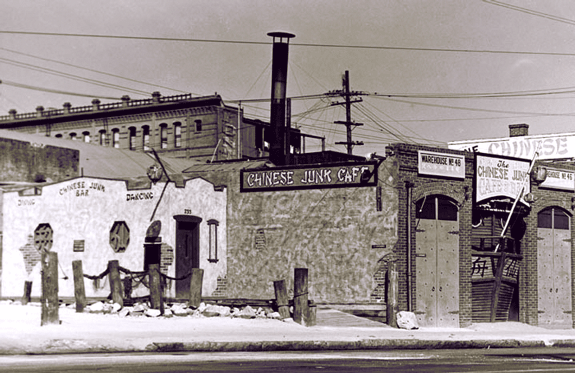

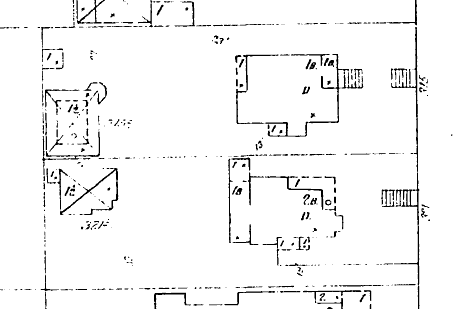
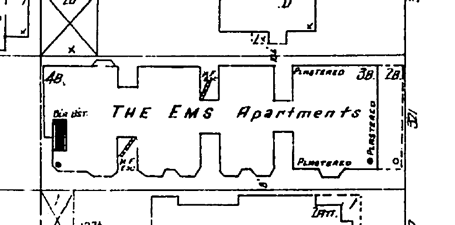
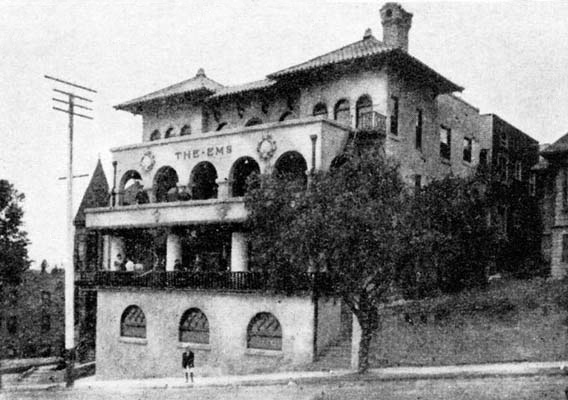
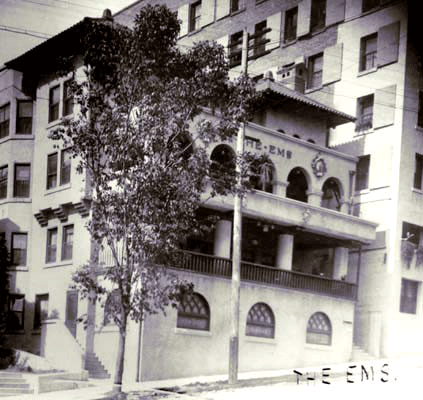
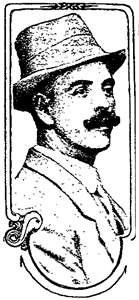
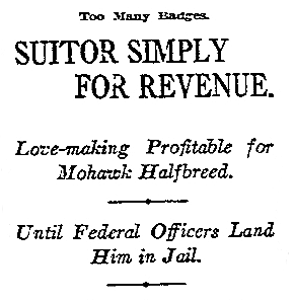
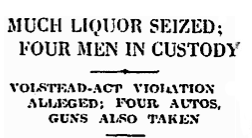 1924. Emsians Jack Hart and James Whitmore were no mere bathtub gin fanciers, nor busted-at-the-speak spuds; the Feds seized Hart & Whitmore‘s forty cases of champagne, seventy-five cases of Scotch, and seventy-three cases of gin, crème de menthe and grain alcohol down at their warehouse, 1840 Lebanon. The liquor was valued at $40,000. In addition to the liquor, the drys seized a large truck, three touring cars and several rifles.
1924. Emsians Jack Hart and James Whitmore were no mere bathtub gin fanciers, nor busted-at-the-speak spuds; the Feds seized Hart & Whitmore‘s forty cases of champagne, seventy-five cases of Scotch, and seventy-three cases of gin, crème de menthe and grain alcohol down at their warehouse, 1840 Lebanon. The liquor was valued at $40,000. In addition to the liquor, the drys seized a large truck, three touring cars and several rifles.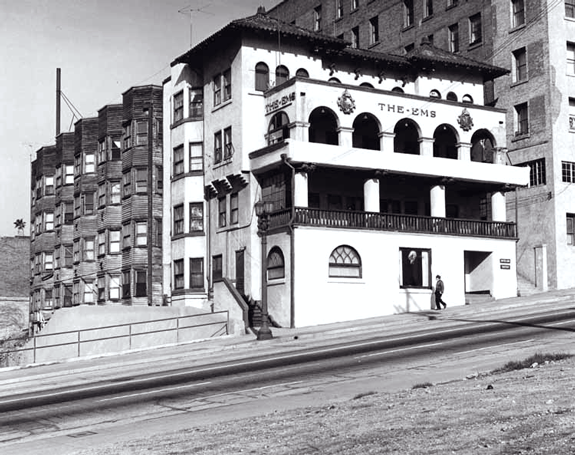
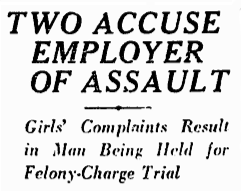 1930. An employment agency sent Emsite Erma Gogleu, 16, to 903 West Twenty-First St. to fill a position as a mother‘s helper. As soon as she got the job, she was attacked by mother‘s son James D. Anderson. Erma wasn‘t the first to have met with the fate of an Anderson Employee–one Marguerite Cooper, 23, also testified with Erma in Municipal Court about a similar sitch, and the Judge ordered Anderson held on $10,000 bail.
1930. An employment agency sent Emsite Erma Gogleu, 16, to 903 West Twenty-First St. to fill a position as a mother‘s helper. As soon as she got the job, she was attacked by mother‘s son James D. Anderson. Erma wasn‘t the first to have met with the fate of an Anderson Employee–one Marguerite Cooper, 23, also testified with Erma in Municipal Court about a similar sitch, and the Judge ordered Anderson held on $10,000 bail.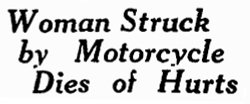 1934. Emsman Joe Shaw, 26, was roaring along on his motorcycle on a Friday night down at 30th and Broadway, when he fatally struck Mrs. Marianna Valenzuela, 58. Hey, I warned you that the Ems lacked gripping and protracted tales. But look at those pretty pictures.
1934. Emsman Joe Shaw, 26, was roaring along on his motorcycle on a Friday night down at 30th and Broadway, when he fatally struck Mrs. Marianna Valenzuela, 58. Hey, I warned you that the Ems lacked gripping and protracted tales. But look at those pretty pictures.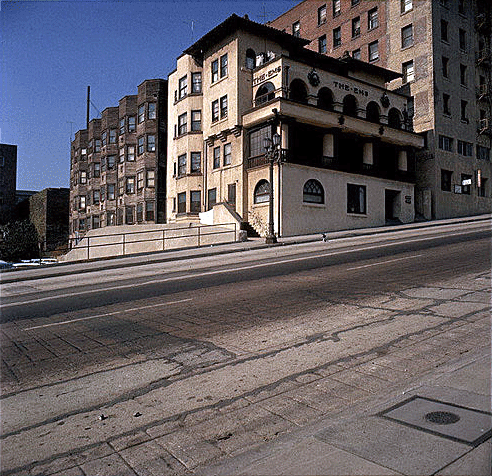
 1942. Every hotel has a suicide. And despite Harold‘s line to his Uncle Victor–“during wartime the national suicide rate goes down”–on Bunker Hill, there‘s still wartime Selbsmord (the Belmont had two in ‘42). It‘s easy to posit that the suicide rate is a constant, and the papers make a point of reporting ”˜em during wartime to detract the populace from all those incoming body bags. If you go for that sort of mass-media-control conspiracy. That notwithstanding, nine months after we got into the war, Joseph Buotha, a 58-year-old former private investigator, ate several bottles of pills in his Ems apartment. He had just written a long telegram to Eleanor Roosevelt, and this note: “Please let me alone. Let fate take its course. Notify John G. Wenk to take care of my belongings. Please don‘t hurt the dog. May God forgive you.”
1942. Every hotel has a suicide. And despite Harold‘s line to his Uncle Victor–“during wartime the national suicide rate goes down”–on Bunker Hill, there‘s still wartime Selbsmord (the Belmont had two in ‘42). It‘s easy to posit that the suicide rate is a constant, and the papers make a point of reporting ”˜em during wartime to detract the populace from all those incoming body bags. If you go for that sort of mass-media-control conspiracy. That notwithstanding, nine months after we got into the war, Joseph Buotha, a 58-year-old former private investigator, ate several bottles of pills in his Ems apartment. He had just written a long telegram to Eleanor Roosevelt, and this note: “Please let me alone. Let fate take its course. Notify John G. Wenk to take care of my belongings. Please don‘t hurt the dog. May God forgive you.”
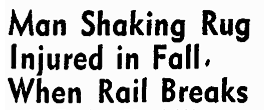 1949. Joe Rupino, 50, was leaning over the railing on the second story balcony, shaking the dust from a rug, when the railing gave way and he fell fifteen feet to the pavement. Rupino received possible fractures of the right wrist, forearm and shoulder, and a trip to Georgia Street and a transfer to General Hospital.
1949. Joe Rupino, 50, was leaning over the railing on the second story balcony, shaking the dust from a rug, when the railing gave way and he fell fifteen feet to the pavement. Rupino received possible fractures of the right wrist, forearm and shoulder, and a trip to Georgia Street and a transfer to General Hospital.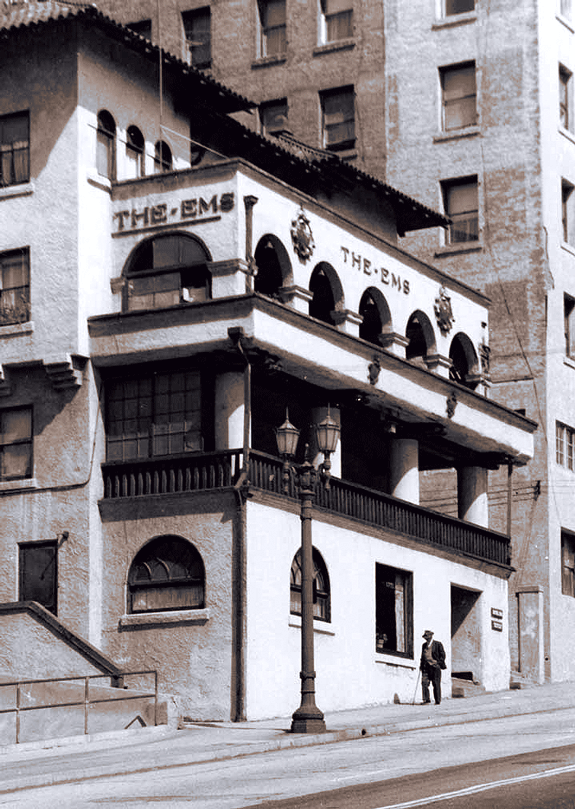
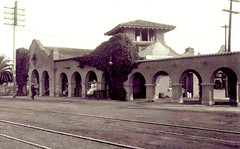 The Ems is “twin tower”, á la the Santa Barbara Mission, and of course there‘s the contemporary tri-tower version a couple blocks over, the somewhat less Mission and more Moorish St. Regis.
The Ems is “twin tower”, á la the Santa Barbara Mission, and of course there‘s the contemporary tri-tower version a couple blocks over, the somewhat less Mission and more Moorish St. Regis.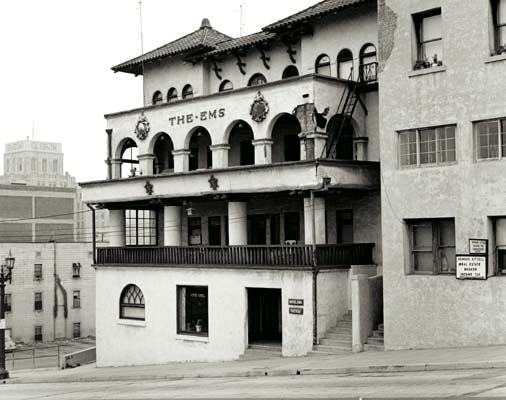
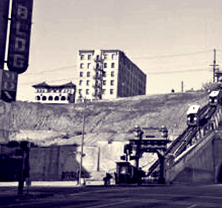 The Ems and the Palace, chunks missing from their plaster, give Bunker Hill the appearance of a city pockmarked by battle.
The Ems and the Palace, chunks missing from their plaster, give Bunker Hill the appearance of a city pockmarked by battle.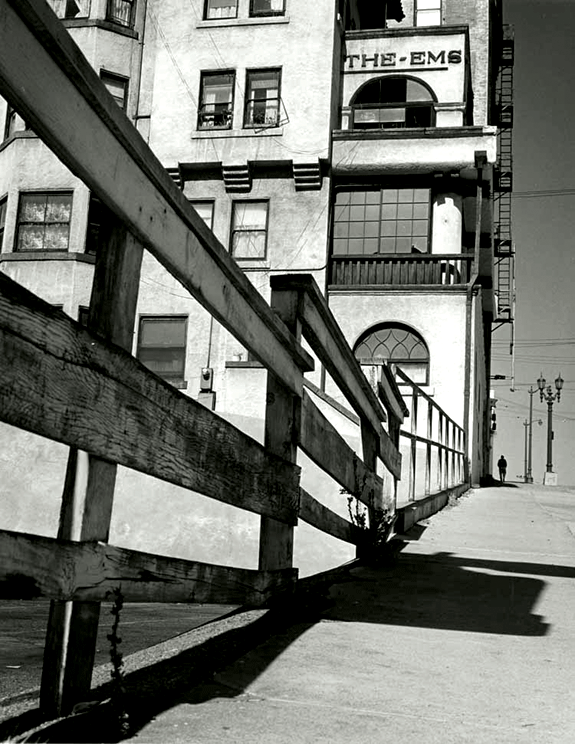


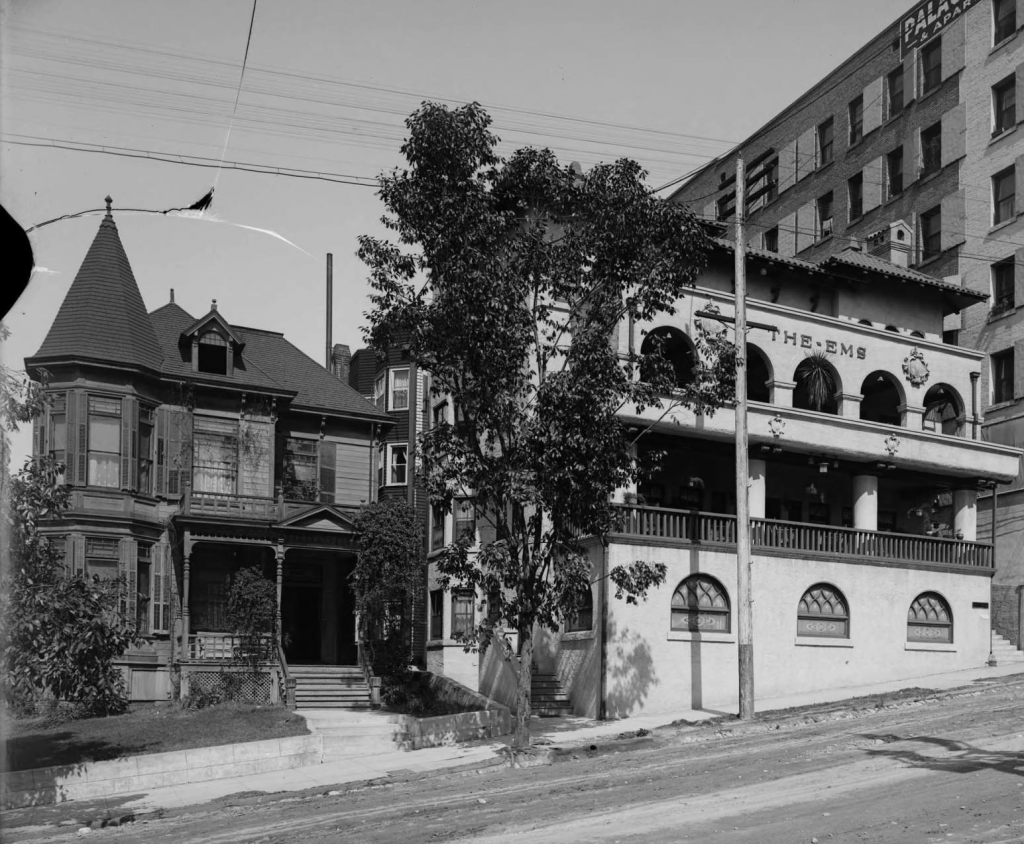
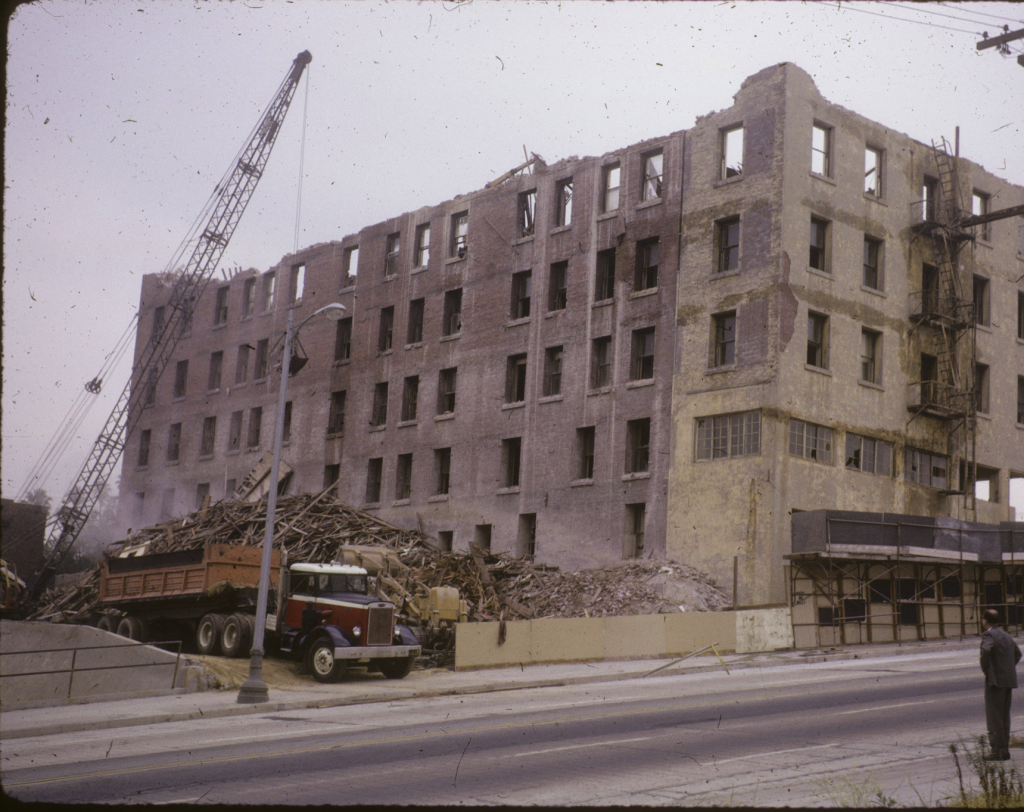

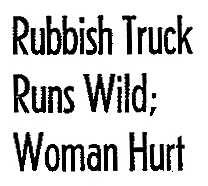 When it rains, it pours. Which is probably a good thing, since rain will put out all that pesky fire.
When it rains, it pours. Which is probably a good thing, since rain will put out all that pesky fire.
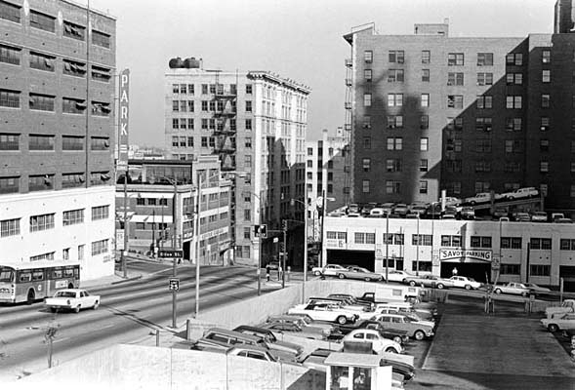
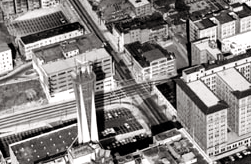 Remarkably, the Savoy still stands. The 600-car Mutual at left in the image above is now the foundation for
Remarkably, the Savoy still stands. The 600-car Mutual at left in the image above is now the foundation for 


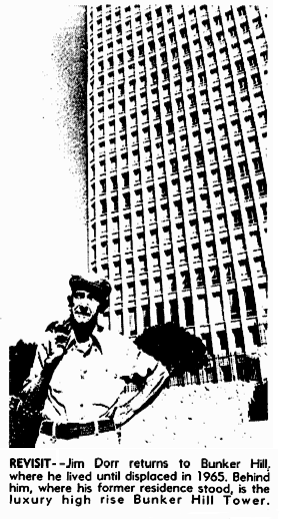 In November 1979, the Times ran a piece about Angelus Plaza, Bunker Hill’s subsidized housing project for seniors. For the article they dug up one of the original uprooted persons, a Jim Dorr, 73, who‘d been sent a notice by the CRA to vacate the Stanley Apartments on November 15, 1965. He‘s glad he saved those displacement papers all these years: HUD will give him priority in the otherwise random lottery.
In November 1979, the Times ran a piece about Angelus Plaza, Bunker Hill’s subsidized housing project for seniors. For the article they dug up one of the original uprooted persons, a Jim Dorr, 73, who‘d been sent a notice by the CRA to vacate the Stanley Apartments on November 15, 1965. He‘s glad he saved those displacement papers all these years: HUD will give him priority in the otherwise random lottery.
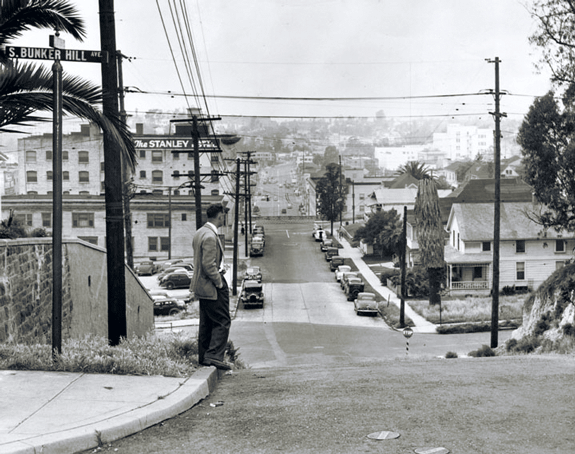

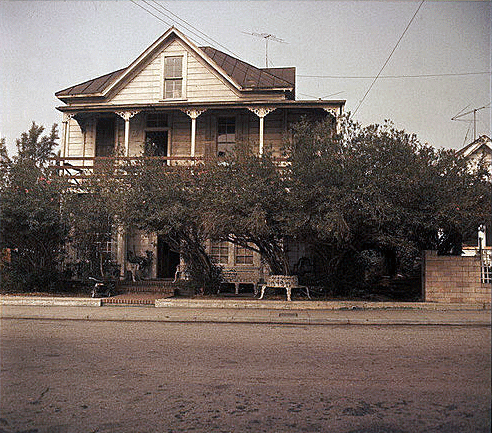


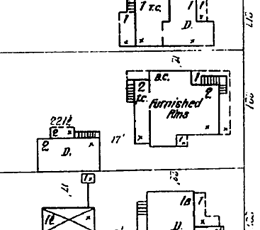

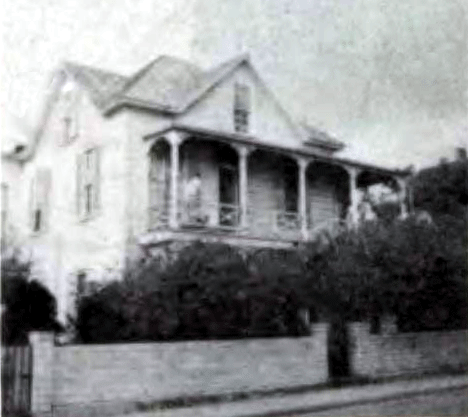
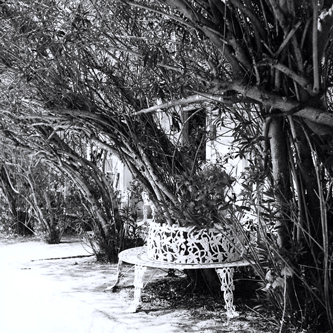
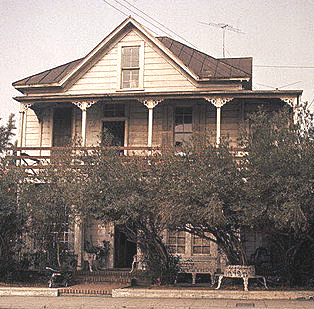 About which Bunker Hill photographer Arnold Hylen described as “a touch of old New Orleans along the sidewalk.” He‘s right not only about that wrought iron, which lends a decided Royal Street flourish. This is a shockingly New Orleans house in general. Granted, the steep cross gables are more Gothic Revival than archetypal Crescent City, but this style of roof treatment is seen frequently in New Orleans. The two-tiered porch with full-length windows are a Gulf Coast hallmark. Doubly remarkable is that this house, with its gingerbread at the upper gallery, choice of board over shingle, and single light in the center gable–evocative of the Creole cottage–was constructed contemporary to New Orleans‘s residential blanketing via the shotgun house (the four-bay arrangement of this home mirroring the double shotgun, though the door placement lends and air of the famous New Orleans centerhall villa). Granted, it‘s a little out of place here; those tall windows are intended to dispel mugginess, hardly a chief concern in the realm of Ask the Dust. Nevertheless, this wasn‘t a celebratory tribute to quaint olde New Orleans–it was built by and for Victorians.
About which Bunker Hill photographer Arnold Hylen described as “a touch of old New Orleans along the sidewalk.” He‘s right not only about that wrought iron, which lends a decided Royal Street flourish. This is a shockingly New Orleans house in general. Granted, the steep cross gables are more Gothic Revival than archetypal Crescent City, but this style of roof treatment is seen frequently in New Orleans. The two-tiered porch with full-length windows are a Gulf Coast hallmark. Doubly remarkable is that this house, with its gingerbread at the upper gallery, choice of board over shingle, and single light in the center gable–evocative of the Creole cottage–was constructed contemporary to New Orleans‘s residential blanketing via the shotgun house (the four-bay arrangement of this home mirroring the double shotgun, though the door placement lends and air of the famous New Orleans centerhall villa). Granted, it‘s a little out of place here; those tall windows are intended to dispel mugginess, hardly a chief concern in the realm of Ask the Dust. Nevertheless, this wasn‘t a celebratory tribute to quaint olde New Orleans–it was built by and for Victorians.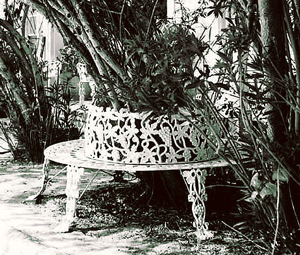
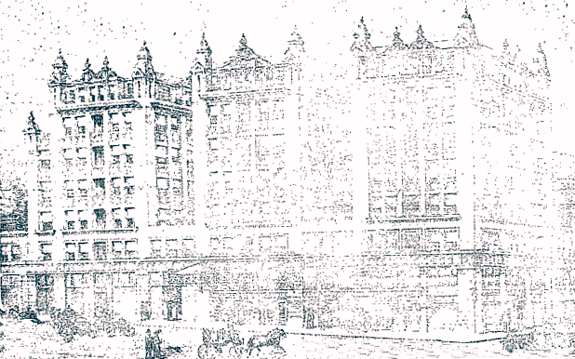



 In the end, the City Prosecutor decided there wasn‘t enough evidence against Earp. Waller Scott pleaded guilty and demanded a jury trial, but the City Prosecutor “didn‘t have the time” to take it up and let the whole thing drop. Dunn, aka Harry Dean, pleaded guilty and was given a six month sentence, suspended, on condition that he leave the city. And so
In the end, the City Prosecutor decided there wasn‘t enough evidence against Earp. Waller Scott pleaded guilty and demanded a jury trial, but the City Prosecutor “didn‘t have the time” to take it up and let the whole thing drop. Dunn, aka Harry Dean, pleaded guilty and was given a six month sentence, suspended, on condition that he leave the city. And so 












 William Friedland was a cigar store clerk at one of the San Carlos‘s sidewalk shops. At least he was until February of 1939, when he got popped for making book therein. The establishment at 513 West Fifth had been raided many times for horserace betting, and in November 1940 Friedland had to go before the LA County Grand Jury to dish the dirt on a crooked horserace racket. He was grilled by none other than Jerry Gielsler, chairman of the Horse Racing Board, who disclosed the racing scandal. Swirled into the mix of our tobaccoshop/bookstore at the San Carlos were bribe-taking jockeys and horse owners, as well as local sharpies Benny Chapman, I. W. Kivel, aka Doc Kebo; Bernard Einstoss, alias Barney Mooney; and Saul “Sonny” Greenberg. Mooney and Kebo gave horse owner Irving Sangbusch (alias James J. Murphy) over $20,000 to bribe jockeys at Hollywood Park in 1939; by the end of 1940 the take was up to $180,000 on a single race.
William Friedland was a cigar store clerk at one of the San Carlos‘s sidewalk shops. At least he was until February of 1939, when he got popped for making book therein. The establishment at 513 West Fifth had been raided many times for horserace betting, and in November 1940 Friedland had to go before the LA County Grand Jury to dish the dirt on a crooked horserace racket. He was grilled by none other than Jerry Gielsler, chairman of the Horse Racing Board, who disclosed the racing scandal. Swirled into the mix of our tobaccoshop/bookstore at the San Carlos were bribe-taking jockeys and horse owners, as well as local sharpies Benny Chapman, I. W. Kivel, aka Doc Kebo; Bernard Einstoss, alias Barney Mooney; and Saul “Sonny” Greenberg. Mooney and Kebo gave horse owner Irving Sangbusch (alias James J. Murphy) over $20,000 to bribe jockeys at Hollywood Park in 1939; by the end of 1940 the take was up to $180,000 on a single race.
 The jury heard testimony from a Clay Selby, manager of the Biltmore Garage, adjacent to the San Carlos. He asserted that the clicking of chips and rattle of dice could be heard from 511 West Fifth as early as 1925 (he remembered the date because that was about the time habitué-of-the-place Eddie Eagen was shot there in a holdup). Selby said that when 513 was in operation, he could hear loud-speakers announcing race results in the garage. When asked if it was loud enough for a policeman on the street to hear it: “Oh,” said Selby, “they all knew about it.”
The jury heard testimony from a Clay Selby, manager of the Biltmore Garage, adjacent to the San Carlos. He asserted that the clicking of chips and rattle of dice could be heard from 511 West Fifth as early as 1925 (he remembered the date because that was about the time habitué-of-the-place Eddie Eagen was shot there in a holdup). Selby said that when 513 was in operation, he could hear loud-speakers announcing race results in the garage. When asked if it was loud enough for a policeman on the street to hear it: “Oh,” said Selby, “they all knew about it.”







 In June of 1914, Mrs. H. G. Purcell, 50, a woman of wealth and taste, had come from Chicago to buy a lot and build a home in sunny Los Angeles. For two years she lived in the Auditorium Hotel, well-liked and highly sought after for social and cultural gatherings. And yet, her father having died of cancer, she believed, rightly or wrongly, that it was going to get her too, and drank a phial of carbolic acid in her room.
In June of 1914, Mrs. H. G. Purcell, 50, a woman of wealth and taste, had come from Chicago to buy a lot and build a home in sunny Los Angeles. For two years she lived in the Auditorium Hotel, well-liked and highly sought after for social and cultural gatherings. And yet, her father having died of cancer, she believed, rightly or wrongly, that it was going to get her too, and drank a phial of carbolic acid in her room.

 Joe Guiterrez, 45, lived at the San Carlos. He‘d been separated from his wife Rafaela Uriarte Guiterrez, 46, for two years. It was Sept. 3, 1941, and Joe had had enough of the San Carlos. He wanted to come home to their house at 1314 Sunset Blvd. He wanted a reconciliation. Always bring a gun to a reconciliation.
Joe Guiterrez, 45, lived at the San Carlos. He‘d been separated from his wife Rafaela Uriarte Guiterrez, 46, for two years. It was Sept. 3, 1941, and Joe had had enough of the San Carlos. He wanted to come home to their house at 1314 Sunset Blvd. He wanted a reconciliation. Always bring a gun to a reconciliation.
 Let‘s go back in time a bit and take a look at some of the folks who make the Auditorium so special.
Let‘s go back in time a bit and take a look at some of the folks who make the Auditorium so special. .
. In the vein of any grand hotel (or, say,
In the vein of any grand hotel (or, say, 

 Julofsky rented an apartement on East 38th, just off Madison Ave. for a month, and then headed west. He met an ex-policeman named John J. Stoney in a Detroit YMCA and they began to travel together. (In answer to a question about girls, he was adamant that no girls were mixed up in the plot whatsoever. Make of that what you will.) Julofsky and Stoney were shacked up together at the Auditorium when Julofsky was nabbed in the lobby on December 27. “I don‘t know why I did it,” said the son of a retired cloak and suit maker, “no girls were mixed up in it and no one is to blame but myself.” He was given three years and change in Sing Sing. He won‘t be alone, though, as his brother Milton and a bond dealer from the Bronx named Arthur Miller were also sent up for criminally receiving his bonds.
Julofsky rented an apartement on East 38th, just off Madison Ave. for a month, and then headed west. He met an ex-policeman named John J. Stoney in a Detroit YMCA and they began to travel together. (In answer to a question about girls, he was adamant that no girls were mixed up in the plot whatsoever. Make of that what you will.) Julofsky and Stoney were shacked up together at the Auditorium when Julofsky was nabbed in the lobby on December 27. “I don‘t know why I did it,” said the son of a retired cloak and suit maker, “no girls were mixed up in it and no one is to blame but myself.” He was given three years and change in Sing Sing. He won‘t be alone, though, as his brother Milton and a bond dealer from the Bronx named Arthur Miller were also sent up for criminally receiving his bonds.
 In the depths of the lengthy trial, a stylishly dressed woman began to moan loudly, and when the bailiffs attempted to escort her out, she twisted and fought and screamed “Help! Help! Help! Let me go, I want to see a Kleagle, I want to see a
In the depths of the lengthy trial, a stylishly dressed woman began to moan loudly, and when the bailiffs attempted to escort her out, she twisted and fought and screamed “Help! Help! Help! Let me go, I want to see a Kleagle, I want to see a 
 February 7, 1923. P. C. Steckel, a boilermaker, and prominent in organized-labor society, was in court today, telling the judge a tearful story all about how he‘d been awarded the Carnegie medal of honor for rescuing some child from an oncoming train. The judge took this in, told Steckel that
February 7, 1923. P. C. Steckel, a boilermaker, and prominent in organized-labor society, was in court today, telling the judge a tearful story all about how he‘d been awarded the Carnegie medal of honor for rescuing some child from an oncoming train. The judge took this in, told Steckel that 
 The Auditorium was also an exhibition hall, of sorts. It was where you‘d go in 1925 if you wanted to see, on display,
The Auditorium was also an exhibition hall, of sorts. It was where you‘d go in 1925 if you wanted to see, on display, 








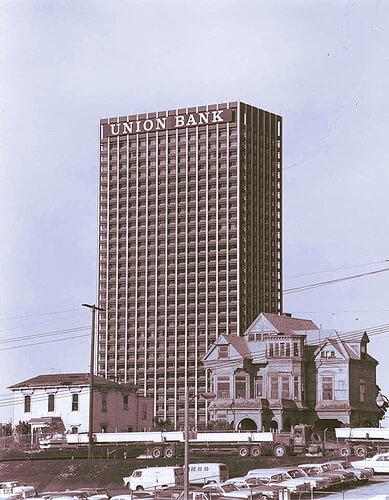
 As has been
As has been 
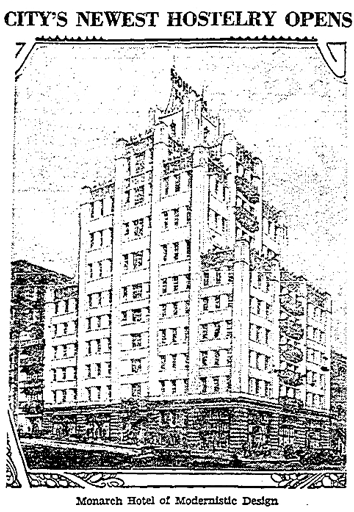

 Night clerk H. N. Willey was behind the desk at the Monarch when, just after midnight on June 16, 1930, a bandit robbed him of $26. Willey phoned Central Station. Meanwhile, officers Doyle and Williams, on patrol, observed a man hightailing it through an auto park near the hotel. Deciding that he wasn‘t running for his health (this being some years before the jogging craze), they gave chase and caught him in an alley. They next observed a patrol car flying to the Monarch. Putting two and two together, they took their prisoner to the hotel, where he was id‘d by Willey. Turns out he was George H. Hall, 24, a recent arrival in Los Angeles.
Night clerk H. N. Willey was behind the desk at the Monarch when, just after midnight on June 16, 1930, a bandit robbed him of $26. Willey phoned Central Station. Meanwhile, officers Doyle and Williams, on patrol, observed a man hightailing it through an auto park near the hotel. Deciding that he wasn‘t running for his health (this being some years before the jogging craze), they gave chase and caught him in an alley. They next observed a patrol car flying to the Monarch. Putting two and two together, they took their prisoner to the hotel, where he was id‘d by Willey. Turns out he was George H. Hall, 24, a recent arrival in Los Angeles. 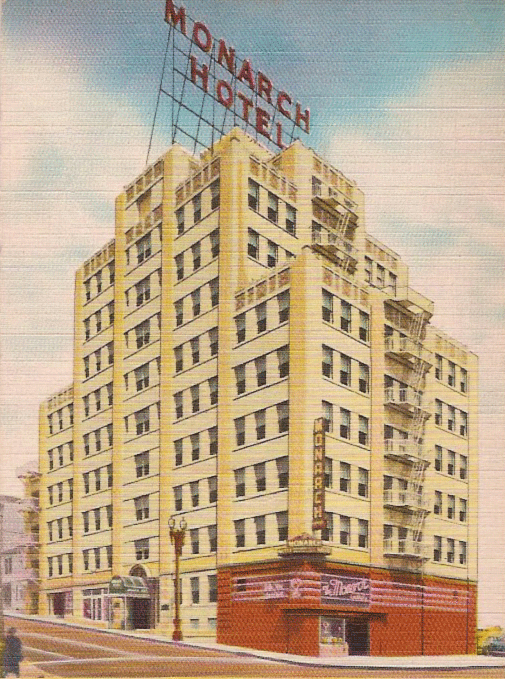

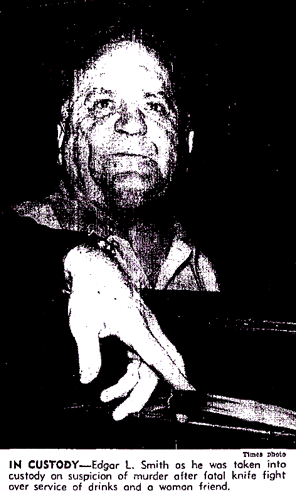
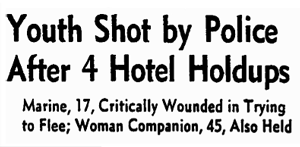
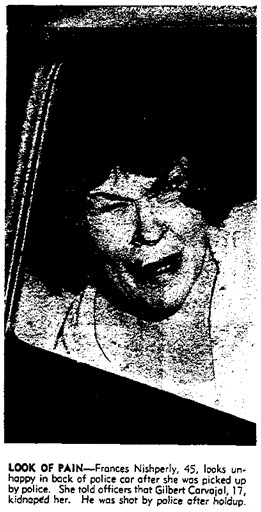

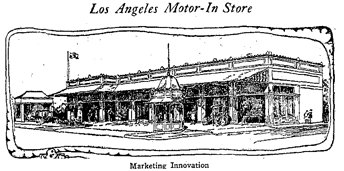 Lead architects on the Monarch are Cramer & Wise, who did pioneering auto-culture work with their 1926 “Motor-In Markets”–one at the
Lead architects on the Monarch are Cramer & Wise, who did pioneering auto-culture work with their 1926 “Motor-In Markets”–one at the 
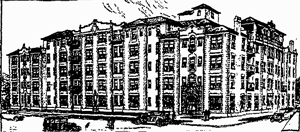 …of course, what they‘re best known for is
…of course, what they‘re best known for is  While Mediterranean in manner, their 1929
While Mediterranean in manner, their 1929 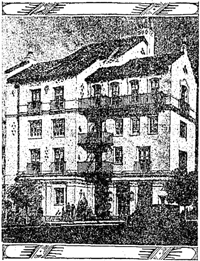

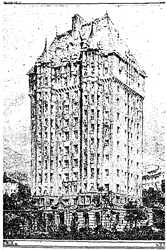
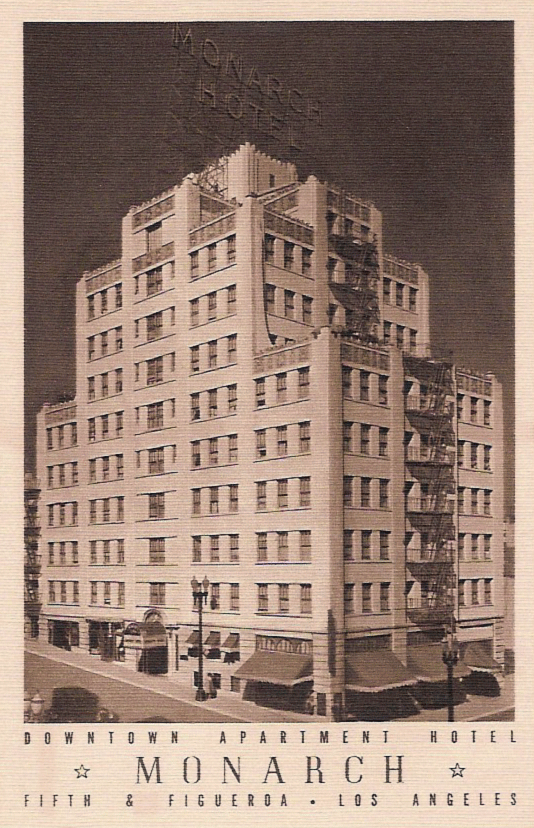
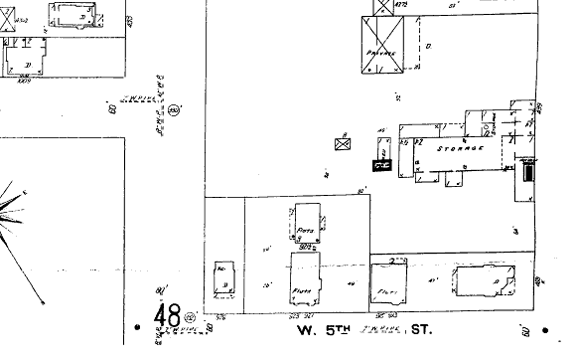
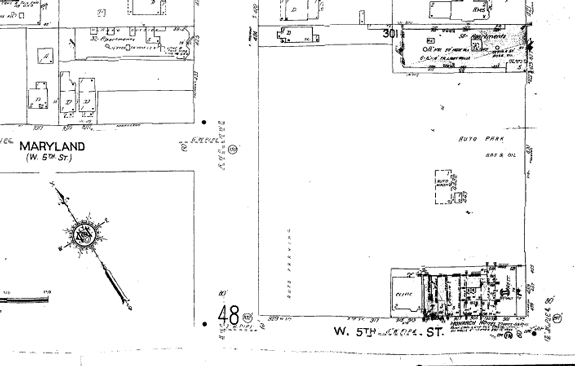
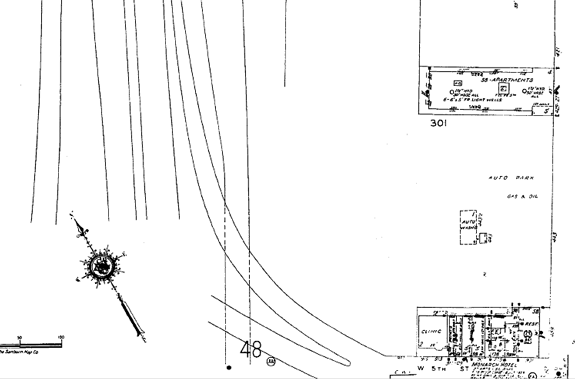

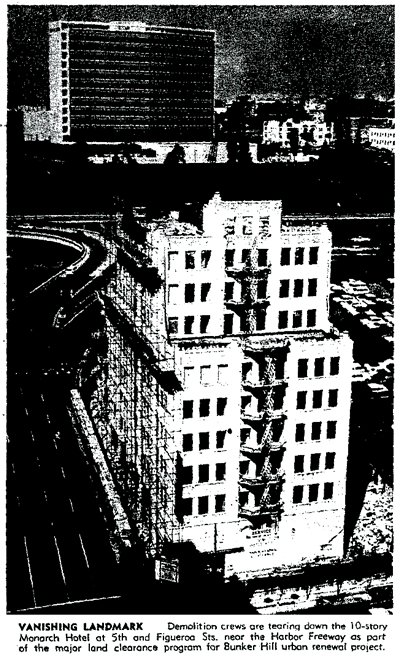
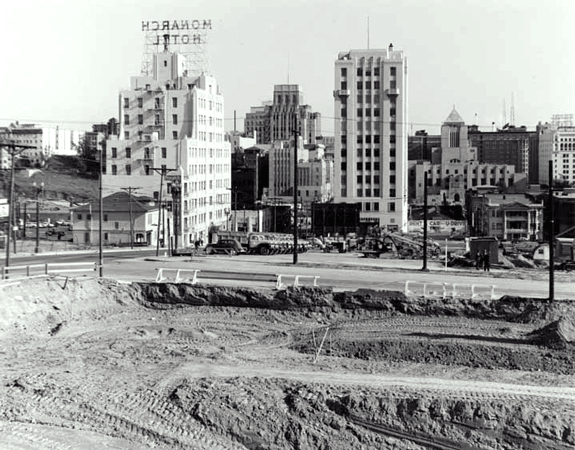
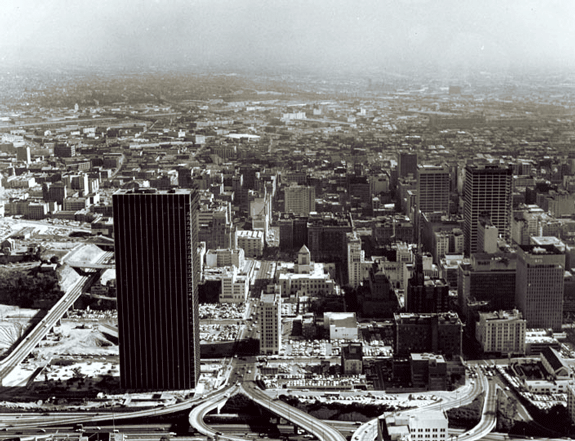
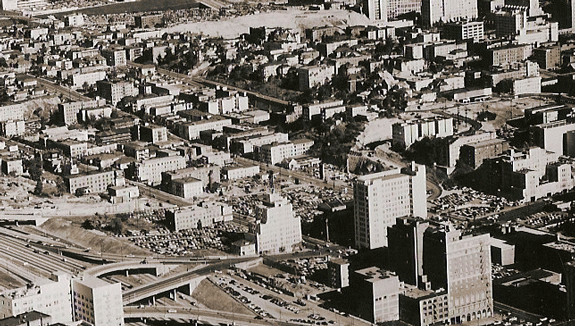


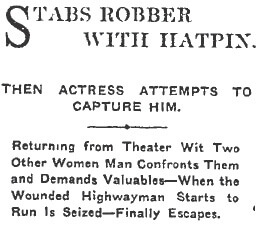


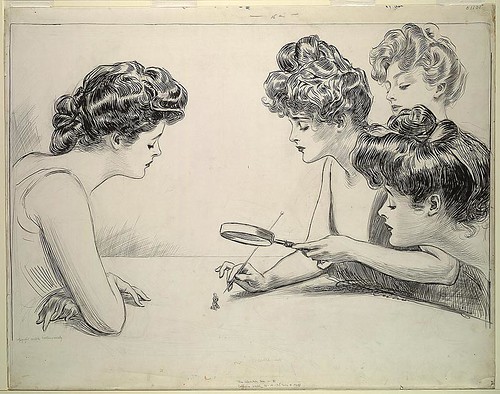
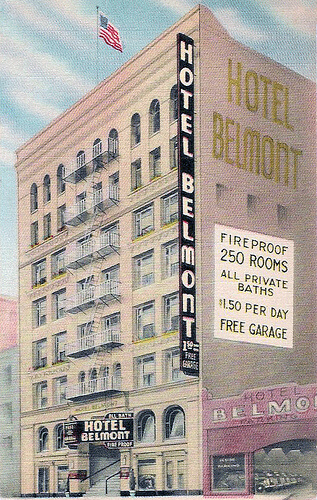

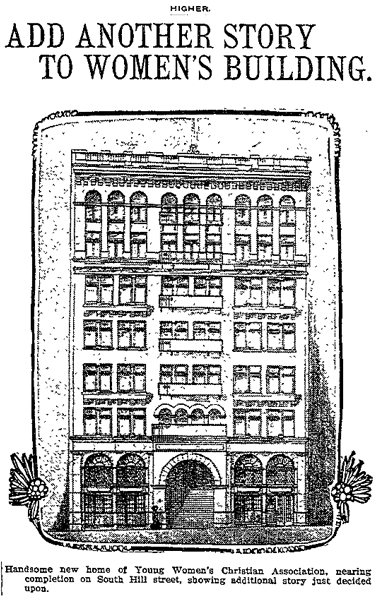
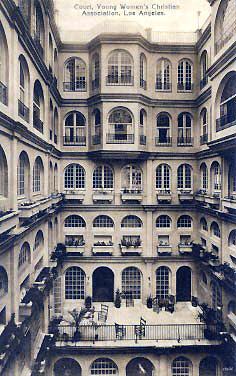
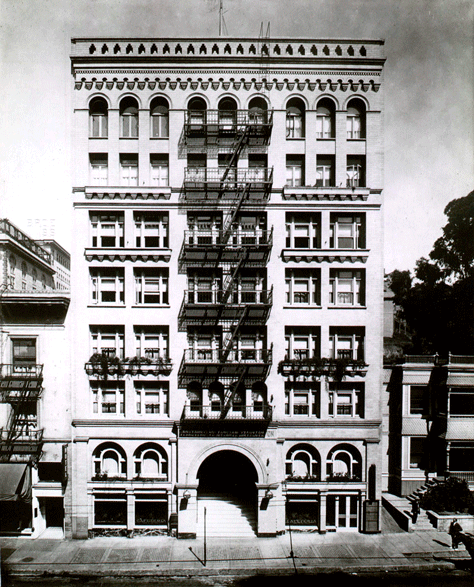
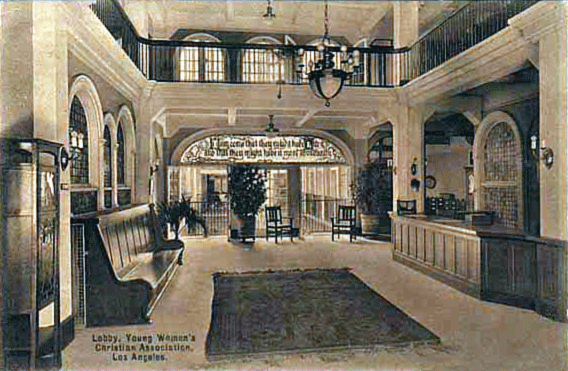


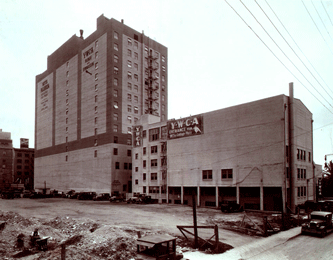
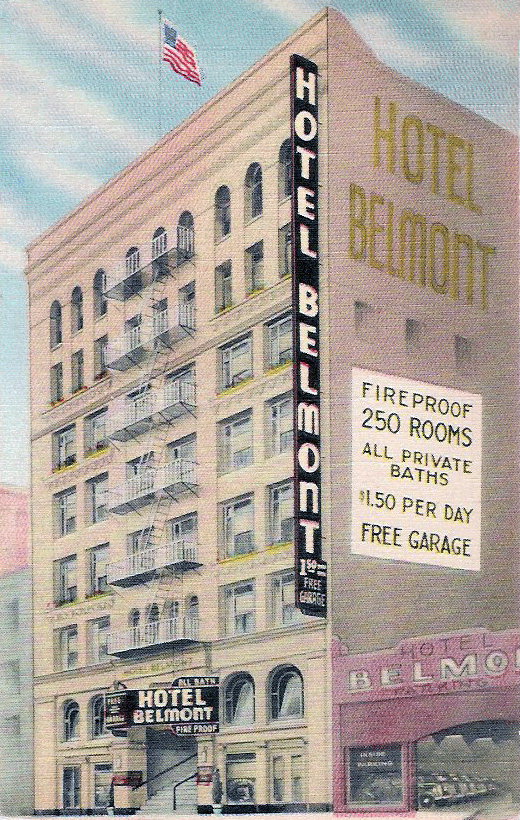
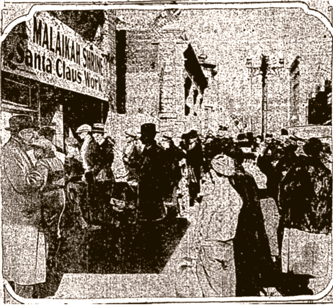
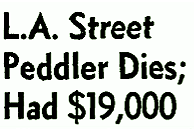
 elevator operator William Patterson, who struck Edwards with his stool (that is, the small stool he sat on in his elevator) and knocked the knife from his hand. Rader struck Patterson with the butt of his gun; the robbers then tangled with 65 year-old Belmont desk clerk A. B. Cramer and eventually fled the scene empty handed–even more so than they came in with, as one of the crew lost their wallet, and they were all easily traced to a downtown roominghouse and arrested.
elevator operator William Patterson, who struck Edwards with his stool (that is, the small stool he sat on in his elevator) and knocked the knife from his hand. Rader struck Patterson with the butt of his gun; the robbers then tangled with 65 year-old Belmont desk clerk A. B. Cramer and eventually fled the scene empty handed–even more so than they came in with, as one of the crew lost their wallet, and they were all easily traced to a downtown roominghouse and arrested.
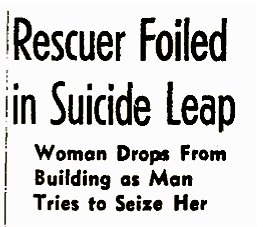 In January 1938, Mrs. Veronica De Shon Miller, 47, recently of Kansas City, divorced, despondent over the death of a friend, and an out-of-work beautician to boot, soaked a towel in ether and smothered herself in her Belmont flat. She was saved there by a friend. Fearing that the Belmont was conspiring to keep her alive, she left a note regarding the disposition of her belongings and made her way to the building at Fourth and Broadway where she once operated a beauty parlor, and flung herself to the concrete floor at the bottom of the light well.
In January 1938, Mrs. Veronica De Shon Miller, 47, recently of Kansas City, divorced, despondent over the death of a friend, and an out-of-work beautician to boot, soaked a towel in ether and smothered herself in her Belmont flat. She was saved there by a friend. Fearing that the Belmont was conspiring to keep her alive, she left a note regarding the disposition of her belongings and made her way to the building at Fourth and Broadway where she once operated a beauty parlor, and flung herself to the concrete floor at the bottom of the light well.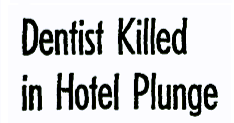 September 28, 1942. Dr. Robert E. Hunsaker, 45, was due in court to face a hearing in a suit filed by his third wife for divorce. So he got a room at the Belmont. Top floor. Desk clerk Bernardo Sargil noticed Hunsaker on the window ledge and called the cops; when they got there they found dancer Ruth Rex in his room, pleading with him not to jump. The cops tried to grab him but Hunsaker ordered them back; finally he said “So long boys, this is getting tiresome,” and loosened his grip, falling the length of the building to meet Hill Street below.
September 28, 1942. Dr. Robert E. Hunsaker, 45, was due in court to face a hearing in a suit filed by his third wife for divorce. So he got a room at the Belmont. Top floor. Desk clerk Bernardo Sargil noticed Hunsaker on the window ledge and called the cops; when they got there they found dancer Ruth Rex in his room, pleading with him not to jump. The cops tried to grab him but Hunsaker ordered them back; finally he said “So long boys, this is getting tiresome,” and loosened his grip, falling the length of the building to meet Hill Street below.
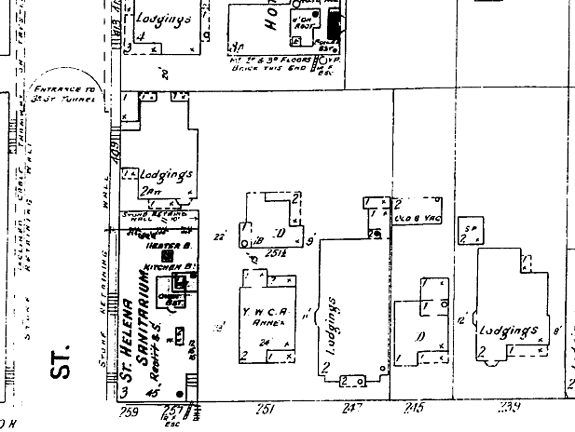
 1950: Behold, the 1907 YWCA, though it‘s been the Belmont now for twenty-five-some years. St. Helena‘s was redubbed “My Hotel” and has a liquor store in its corner. The structures to the east have been wiped for parking; the Kensington is now the Belmont garage. Above, the Astoria has a neighbor, the 1916 Blackstone Apartments.
1950: Behold, the 1907 YWCA, though it‘s been the Belmont now for twenty-five-some years. St. Helena‘s was redubbed “My Hotel” and has a liquor store in its corner. The structures to the east have been wiped for parking; the Kensington is now the Belmont garage. Above, the Astoria has a neighbor, the 1916 Blackstone Apartments.
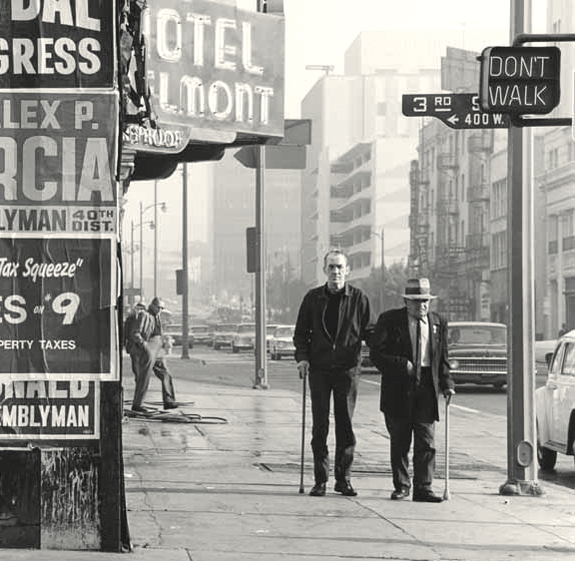
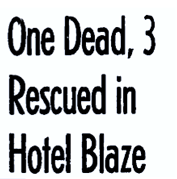 A fire that would have felled a lesser building broke out November 3, 1967. The sixth-floor room of John Riles, 69, believed to have been smoking in bed, went up in flames, engulfing a good bit of that floor and part of the seventh, and all of the late John Riles.
A fire that would have felled a lesser building broke out November 3, 1967. The sixth-floor room of John Riles, 69, believed to have been smoking in bed, went up in flames, engulfing a good bit of that floor and part of the seventh, and all of the late John Riles. 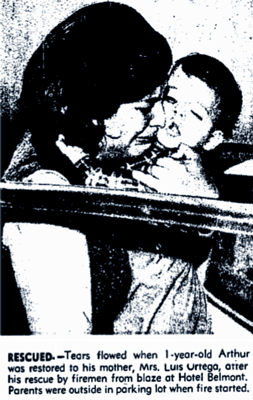
 Find the big red awning–across from the MTA bus parked at the Third Street curb–jutting out from
Find the big red awning–across from the MTA bus parked at the Third Street curb–jutting out from 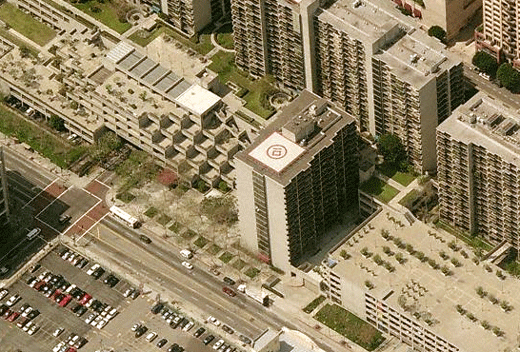
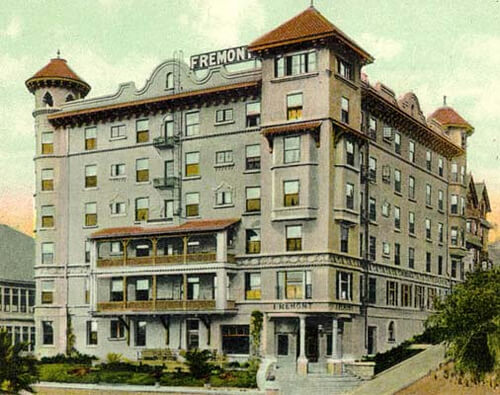
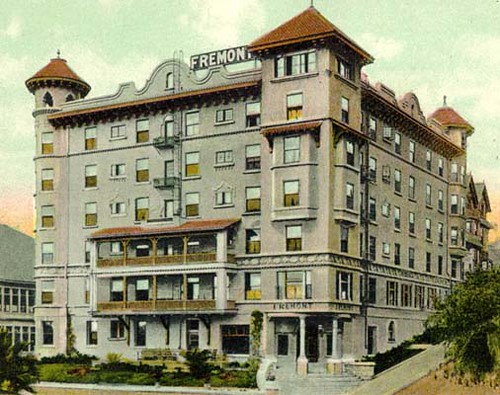

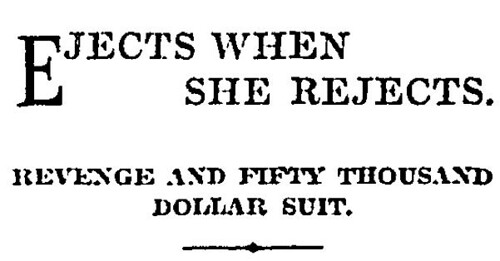
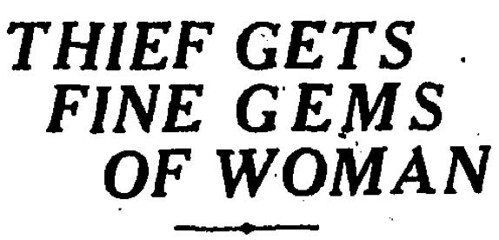
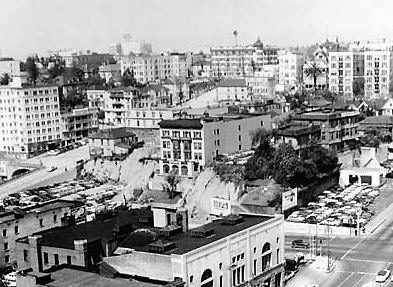
 In that our post about the earth carvings (the Cuscans have nothing on us) at Second and Hill garnered some interest, I thought it worthwhile to detail salient features and goings-on sundry of other buildings on the block.
In that our post about the earth carvings (the Cuscans have nothing on us) at Second and Hill garnered some interest, I thought it worthwhile to detail salient features and goings-on sundry of other buildings on the block.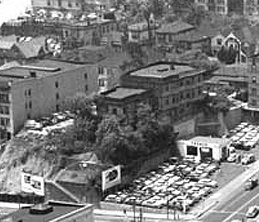
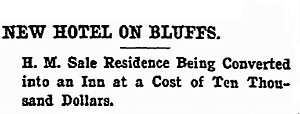


 Not a lot of Postwar noirisme at the El Moro, if you‘re after that sort of thing. Mrs. Mollie Lahiff, 50, died of (what the papers termed) accidental asphyxiation after a gas heater used up all the oxygen in her tightly sealed room, February 26, 1953. Should you be so inclined, consider how drafty these places tend to be. Tightly sealed takes some doing. Just saying.
Not a lot of Postwar noirisme at the El Moro, if you‘re after that sort of thing. Mrs. Mollie Lahiff, 50, died of (what the papers termed) accidental asphyxiation after a gas heater used up all the oxygen in her tightly sealed room, February 26, 1953. Should you be so inclined, consider how drafty these places tend to be. Tightly sealed takes some doing. Just saying.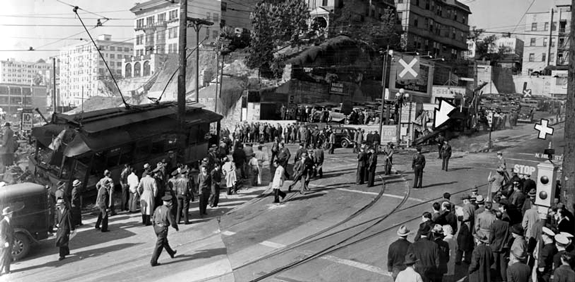


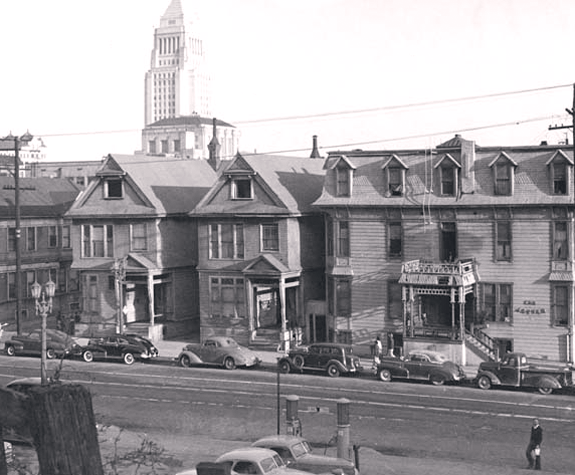
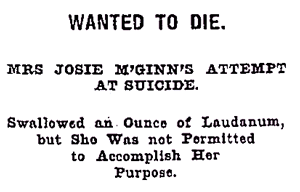
 A favorite phrase of Edwardian Angeles is “sneak thief,” and Bunker Hill sneak thieves were forever securing some silver coinage here and a jeweled stick-pin there; on August 17, 1903, for example, during Mrs. H. Ware‘s temporary absence from 132, a sneak thief entered and stole $10 and a gold watch (a similar burglary occurred that same day, where at 104 S. Olive a room occupied by Mrs. Case was ransacked and liberated of $20).
A favorite phrase of Edwardian Angeles is “sneak thief,” and Bunker Hill sneak thieves were forever securing some silver coinage here and a jeweled stick-pin there; on August 17, 1903, for example, during Mrs. H. Ware‘s temporary absence from 132, a sneak thief entered and stole $10 and a gold watch (a similar burglary occurred that same day, where at 104 S. Olive a room occupied by Mrs. Case was ransacked and liberated of $20). 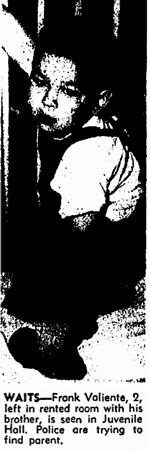
 July 30, 1954. Jesus Chaffino is a 2 year-old with a talent for opening doors. Apparently his mother, Maria Avila, didn‘t tell her sister-in-law that when she left her place at 121 North Hope and dropped of the Jesus at 132 S. Olive. He was turned over to juvenile officers when he was found wandering near First and Olive at five a.m.
July 30, 1954. Jesus Chaffino is a 2 year-old with a talent for opening doors. Apparently his mother, Maria Avila, didn‘t tell her sister-in-law that when she left her place at 121 North Hope and dropped of the Jesus at 132 S. Olive. He was turned over to juvenile officers when he was found wandering near First and Olive at five a.m.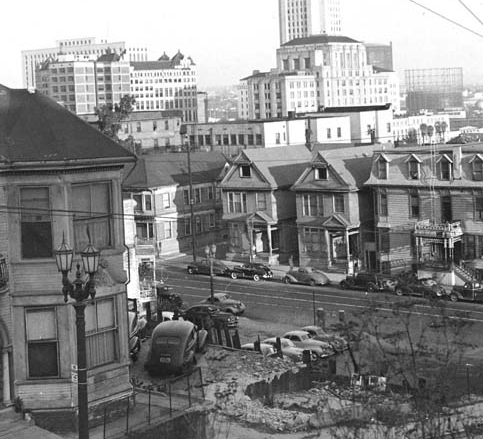
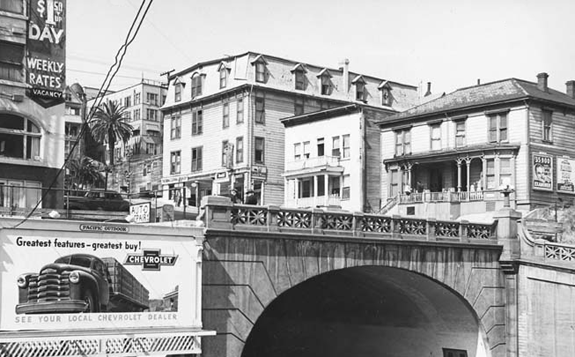
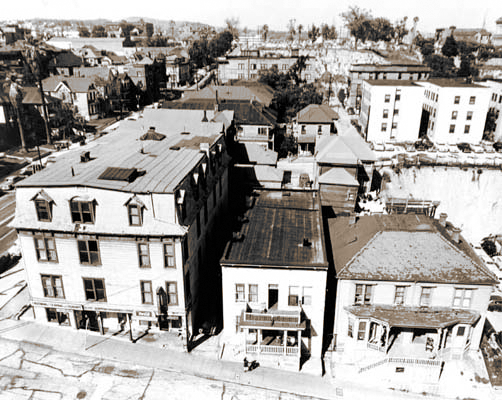
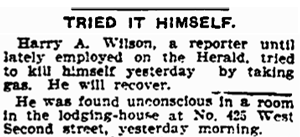
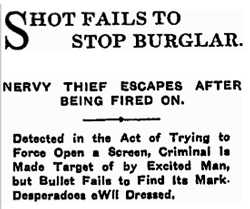 July 16, 1907. A burglar was detected working the window at Mrs. M. M. Clay‘s apartment house, 425, by her daughter, Clara Clay. She exclaimed under her breath to a Mr. Charles See, who kept the apartment above hers, “There‘s a man trying my window.”
July 16, 1907. A burglar was detected working the window at Mrs. M. M. Clay‘s apartment house, 425, by her daughter, Clara Clay. She exclaimed under her breath to a Mr. Charles See, who kept the apartment above hers, “There‘s a man trying my window.”
